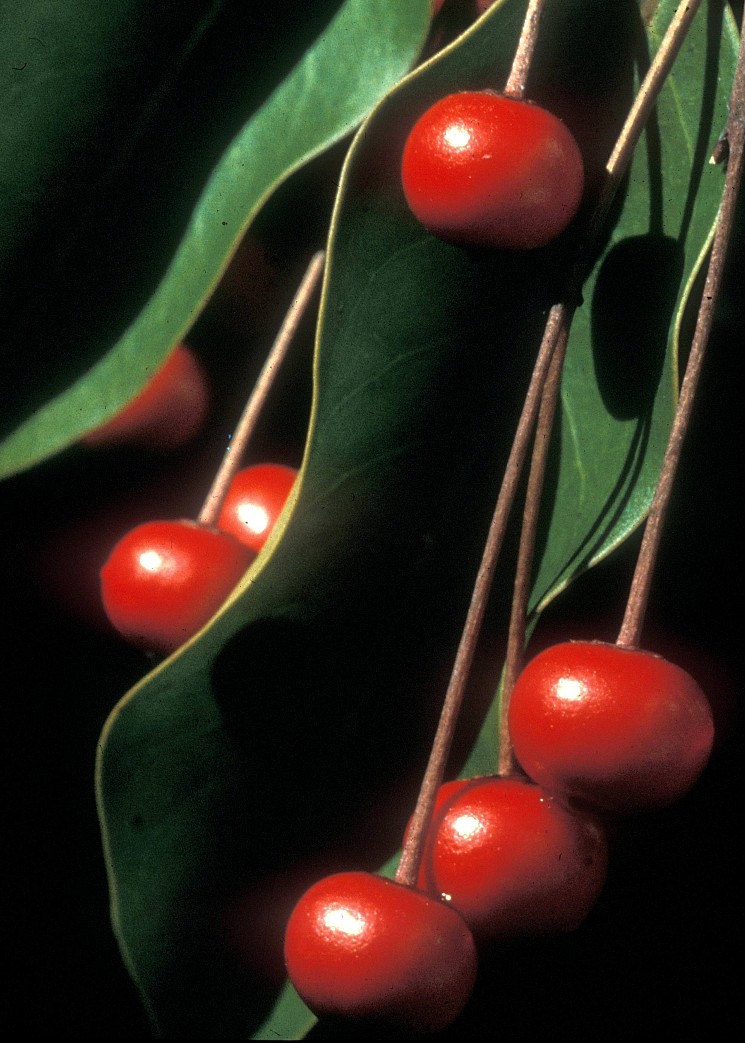Longstalk holly, Ilex pedunculosa

…How firmly you are rooted,
And steadfastly you stand,
As you put all other flora to shame.
And your effulgence,
Pierces life’s maelstrom,
Like a beacon.
– son of frost
The brilliant, bright, red berries of hollies have long been popular, especially during our holiday seasons. Previously, we have discussed American holly, Ilex opaca, and English holly, Ilex aquifolium. But, this month, we sing the charms of the Longstalk holly, Ilex pedunculosa, a less known, but exceedingly attractive, evergreen, large shrub. As with other hollies, these are dioecious plants, meaning that male and female flowers occur on different plants. A striking feature of these plants, are their ¼”-diameter, red fruits, which dangle distinctively, on 1 ½”-long stalks. Hence, its common name, and its species name, as well, which alludes to the peduncle, the botanical term for the stem of the flower, which of course, precedes the development of the fruit. These less conspicuous, white flowers appear in June.
This impressive, broad, shrub may grow to a height of 15-feet, and has simple, dark-green, lustrous, 1 to 3”-long, entire (untoothed), elliptic-shaped, leaves. Native to Japan and China, the Longstalk holly, was introduced to the United States in 1892, by Charles Sprague Sargent (1841-1927), the founding director of the Arnold Arboretum of Harvard University. Sargent, had earlier in his career, worked with Harvard University’s, Asa Gray (1810-1888), Lot #3904, Holly Path, one of America’s preeminent botanists. Gray was a pioneer of the study of plant geography, and America’s foremost advocate of Charles Darwin’s (1809-1882) theory of plant speciation. Gray had researched the comparisons of the botany of Japan and New England, and Sargent would later continue to confirm, the similarities between the floras of eastern Asia and eastern North America.
On your next visit to Mount Auburn, look for our Longstalk hollies growing on Halcyon Path, Oak Knoll, Birch Avenue, and Meadow Road.
Leave a Reply